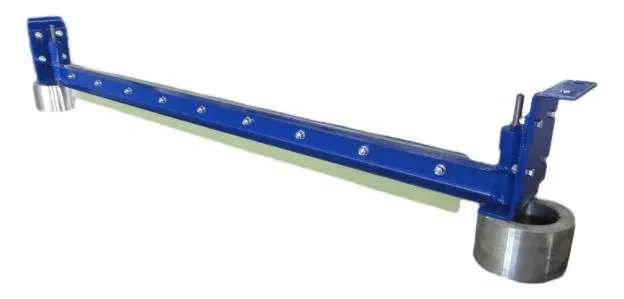 Afrikaans
Afrikaans  Albanian
Albanian  Amharic
Amharic  Arabic
Arabic  Armenian
Armenian  Azerbaijani
Azerbaijani  Basque
Basque  Belarusian
Belarusian  Bengali
Bengali  Bosnian
Bosnian  Bulgarian
Bulgarian  Catalan
Catalan  Cebuano
Cebuano  Corsican
Corsican  Croatian
Croatian  Czech
Czech  Danish
Danish  Dutch
Dutch  English
English  Esperanto
Esperanto  Estonian
Estonian  Finnish
Finnish  French
French  Frisian
Frisian  Galician
Galician  Georgian
Georgian  German
German  Greek
Greek  Gujarati
Gujarati  Haitian Creole
Haitian Creole  hausa
hausa  hawaiian
hawaiian  Hebrew
Hebrew  Hindi
Hindi  Miao
Miao  Hungarian
Hungarian  Icelandic
Icelandic  igbo
igbo  Indonesian
Indonesian  irish
irish  Italian
Italian  Japanese
Japanese  Javanese
Javanese  Kannada
Kannada  kazakh
kazakh  Khmer
Khmer  Rwandese
Rwandese  Korean
Korean  Kurdish
Kurdish  Kyrgyz
Kyrgyz  Lao
Lao  Latin
Latin  Latvian
Latvian  Lithuanian
Lithuanian  Luxembourgish
Luxembourgish  Macedonian
Macedonian  Malgashi
Malgashi  Malay
Malay  Malayalam
Malayalam  Maltese
Maltese  Maori
Maori  Marathi
Marathi  Mongolian
Mongolian  Myanmar
Myanmar  Nepali
Nepali  Norwegian
Norwegian  Norwegian
Norwegian  Occitan
Occitan  Pashto
Pashto  Persian
Persian  Polish
Polish  Portuguese
Portuguese  Punjabi
Punjabi  Romanian
Romanian  Russian
Russian  Samoan
Samoan  Scottish Gaelic
Scottish Gaelic  Serbian
Serbian  Sesotho
Sesotho  Shona
Shona  Sindhi
Sindhi  Sinhala
Sinhala  Slovak
Slovak  Slovenian
Slovenian  Somali
Somali  Spanish
Spanish  Sundanese
Sundanese  Swahili
Swahili  Swedish
Swedish  Tagalog
Tagalog  Tajik
Tajik  Tamil
Tamil  Tatar
Tatar  Telugu
Telugu  Thai
Thai  Turkish
Turkish  Turkmen
Turkmen  Ukrainian
Ukrainian  Urdu
Urdu  Uighur
Uighur  Uzbek
Uzbek  Vietnamese
Vietnamese  Welsh
Welsh  Bantu
Bantu  Yiddish
Yiddish  Yoruba
Yoruba  Zulu
Zulu types of pulley in conveyor
Types of Pulleys in Conveyors
When it comes to conveyor systems, pulleys play a vital role in ensuring smooth and efficient material handling. These mechanical components control the direction and movement of the conveyor belt, and understanding the various types of pulleys can help in selecting the right system for specific industrial applications. This article will explore the different types of pulleys commonly used in conveyor systems.
1. Drive Pulleys
Drive pulleys, also known as motorized pulleys, are typically placed at the tail end of the conveyor system. They produce the driving force that moves the belt forward. These pulleys are powered by an electric motor, which is either directly connected or coupled via a gearbox. Drive pulleys can vary in size, depending on the load requirements and the speed of the conveyor system. They often come with a rubber or lagging surface to enhance friction and prevent slippage between the pulley and the belt.
Idler pulleys are critical components that do not have a power source. Instead, their primary function is to support and guide the conveyor belt. Positioned at intervals along the conveyor system, idler pulleys help maintain belt tension and alignment, reducing the risk of misalignment and wear. These pulleys can be either plain or crowned, with crowned idlers being particularly useful for maintaining belt alignment and reducing side slip.
types of pulley in conveyor

3. Pulley Types by Application
Pulleys can also be categorized based on their specific applications. For instance, snub pulleys are used to increase the angle of contact between the drive pulley and the conveyor belt, enhancing grip and efficiency. Tension pulleys, on the other hand, are employed to adjust the tension on the conveyor belt, which is essential for maintaining optimal operation. Additionally, return pulleys are designed to support the belt as it returns to the drive pulley, ensuring a continuous cycle of material handling.
4. Specialty Pulleys
In some scenarios, specialty pulleys are utilized to meet unique requirements. For example, magnetic pulleys incorporate magnets to separate ferrous materials from non-ferrous ones during the conveyance process. There are also spiral pulleys, which help facilitate the movement of materials on inclined conveyor systems, allowing for efficient elevation without losing momentum.
Conclusion
The effective operation of a conveyor system hinges on the correct selection and utilization of pulleys. Each type of pulley serves a specific purpose, and understanding these roles can significantly enhance the efficiency and reliability of material handling operations. As industries continue to evolve, the demand for advanced pulley systems will undoubtedly increase, necessitating ongoing innovation in conveyor technology.
-
Revolutionizing Conveyor Reliability with Advanced Rubber Lagging PulleysNewsJul.22,2025
-
Powering Precision and Durability with Expert Manufacturers of Conveyor ComponentsNewsJul.22,2025
-
Optimizing Conveyor Systems with Advanced Conveyor AccessoriesNewsJul.22,2025
-
Maximize Conveyor Efficiency with Quality Conveyor Idler PulleysNewsJul.22,2025
-
Future-Proof Your Conveyor System with High-Performance Polyurethane RollerNewsJul.22,2025
-
Driving Efficiency Forward with Quality Idlers and RollersNewsJul.22,2025





























